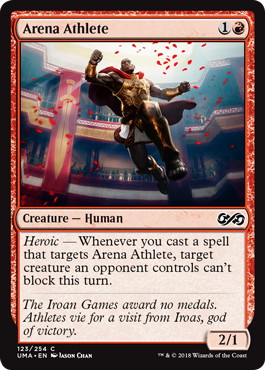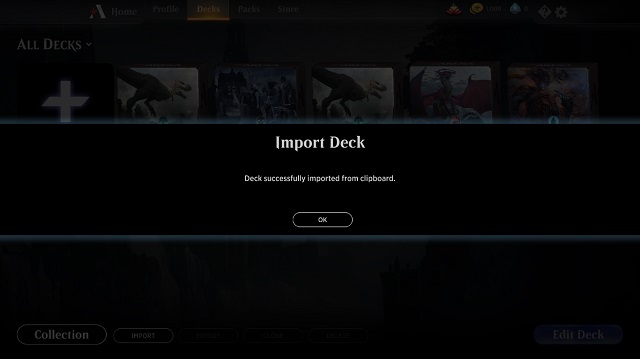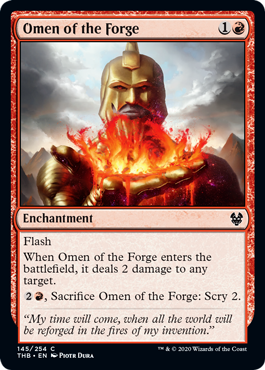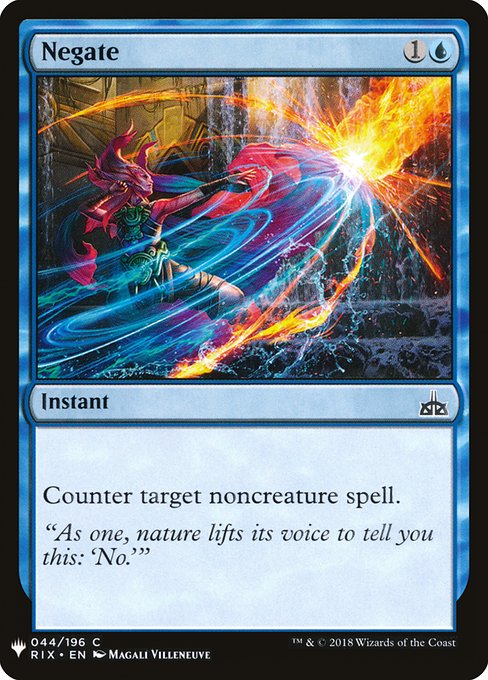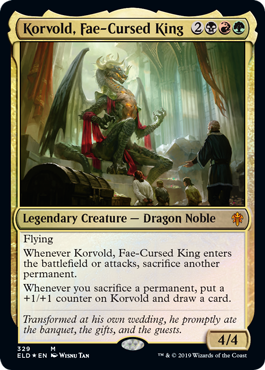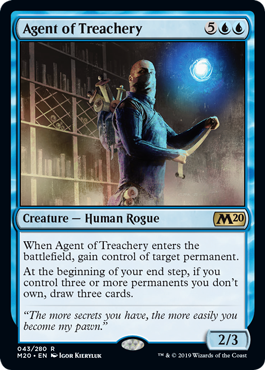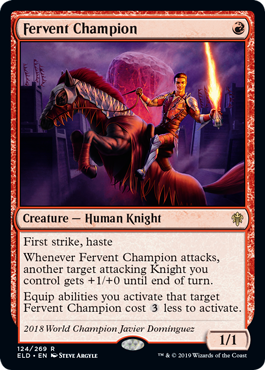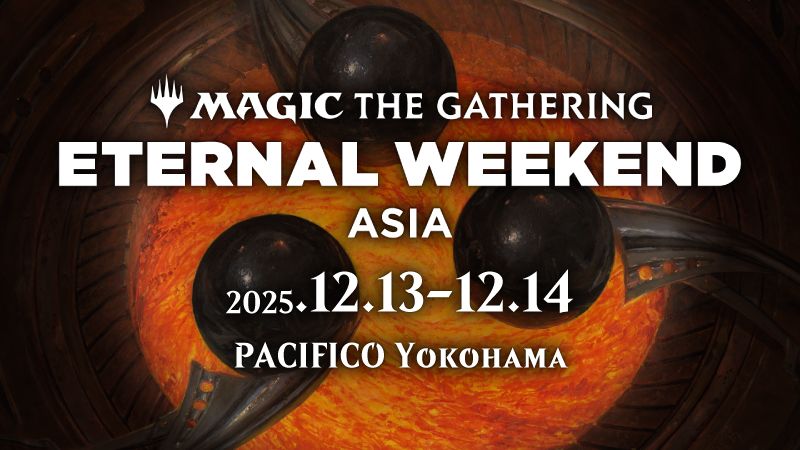Introduction
Hola!
This weekend, on MTG Arena, we are going to have the chance to compete on the first Arena Open. The Arena Open is going to be a 2-day tournament where the format of the tournament won’t be exactly the same on the different days. While day 2 will be played in best of three Standard, day one will be played on best of one! That means there will be some differences for those players used to play best of three.
Three Big Differences Between Bo3 and Bo1
The big differences between Bo3 and Bo1 are sideboarding, the hand algorithm and the different metagame the first two create.
Sideboarding
Not having access to the sideboard games is going to have an impact on which decks are better for a metagame, since having a good sideboard is a very important part of what makes a good deck strong. Generally speaking, the less a deck uses for sideboarding purposes, the better it should become for Bo1. 《Fae of Wishes》 decks or decks with extremely weak sideboards like Mono-Red are good examples of this.
Keep in mind that most decks might have an extremely narrow use for having a sideboard thanks to cards like 《Robber of the Rich》es or 《Agent of Treachery》 stealing effects that let you access to your sideobard!
Hand Algorithm
Even though we have no details on how exactly the Hand Algorithm works, we do know that best of 1 format has a “hand selector” at the beginning of the game that instead of drawing 1 hand, draws 2 or more starting hands and selects the one that’s more similar to the proportion of our deck in terms of lands and spells. We also know it doesn’t take in account colors or make any difference between type of spells; the algorithm only uses lands and spells.
This is going to make some decks way better. Others, not so much. It will make decks with relatively low land counts mulligan less, for example, since it is less likely that they will miss their critical mass of lands needed to start playing. It will also help less decks that do not mulligan much, like Boros Cycling. This algorithm is also better for mono-colored decks, since there is no thing as colorscrew for them, or an excess of tapped lands. The algorithm is going to make every deck function more often, but it won’t help every deck in the same way. It could be easy to think that mono-colored decks must be much better in Bo1 because of these two things I just talked about. But there is one more factor, always important in Magic, which is a lesson I did learn playing a lot of Bo1 for the 2019 Mythic Invitational.
Metagame
Metagaming is always a very important part of preparing a Magic tournament. Would you rather play a good deck when everyone is trying to beat it, or would it be better to play a slightly worse deck that is under the radar? Metagaming is always tricky, and that is also true for Bo1.
We’ve concluded decks like Mono-Red Aggro are likely better because of the no sideboarding factor and the algorithm. However, that might be obvious for your opposition as well. Is Mono-Red Aggro really a better deck if our opponents starting packing cards that are specifically against aggro just because they expect a lot of aggressive decks? Likely not.
For this reason, I think the best approach to play Bo1 is usually to play a deck that’s naturally good against aggressive strategies while you can spend a small amount of your maindeck slots to fight mirror matches. In the past, I considered Esper Control to be a perfect example of this with cards like 《Oath of Kaya》 and 《Kaya’s Wrath》 pulling all the weight against aggressive decks like Mono-Red.
《Oath of Kaya》 is a perfect example of a very good Bo1 card, since it is a “hate card” against aggressive decks, where it is a great draw at almost any stage of the game, while still not being completely dead, because it can deal with stuff like 《Narset, Parter of Veils》. I think it is very important for Bo1 deckbuilding to make sure our deck is packed with cards like this, that are very good where you want it but also never completely dead.
So far we’ve concluded decks like Mono-Red are likely going to be good, and decks like Temur Adventures are probably going to be stronger since the huge cost they pay to play 《Fae of Wishes》 is essentially free for Bo1. We also know that Jeskai Lukka is likely still very good, and that Bant Control is going to be surely worse since it is a deck that relies a lot on having an excellent post-sideboard configuration against everything.
Keeping all of this in mind, it is time for THAT question:
What Will I Play?
I want to play a deck that is explosive enough to race the most aggressive decks while also making sure I am metagaming against what I expect to be the most played decks on the Bo1 event, which are aggressive strategies (Obosh) and Yorion decks with a large share of those being Jeskai Lukka. Here is my decklist for the event:
- Javier Dominguez
- – Jeskai Lukka
- (Best of 1 Standard)
3 《Plains》
2 《Mountain》
4 《Raugrin Triome》
4 《Hallowed Fountain》
4 《Sacred Foundry》
4 《Steam Vents》
4 《Fabled Passage》
3 《Temple of Epiphany》
4 《Castle Ardenvale》
1 《Castle Vantress》
-Land (36)- 3 《Agent of Treachery》
-Creature (3)-
1 《Solar Blaze》
4 《Omen of the Sea》
4 《The Birth of Meletis》
3 《Omen of the Forge》
4 《Omen of the Sun》
4 《Fires of Invention》
4 《Elspeth Conquers Death》
4 《Shark Typhoon》
4 《Narset, Parter of Veils》
4 《Teferi, Time Raveler》
4 《Lukka, Coppercoat Outcast》
-Spell (41)-
1 《Charming Prince》
1 《Fae of Wishes》
1 《Gadwick, the Wizened》
1 《Archon of Sun’s Grace》
1 《Thassa, Deep-Dwelling》
1 《Dream Trawler》
1 《Meteor Golem》
1 《Realm-Cloaked Giant》
1 《Shatter the Sky》
1 《Solar Blaze》
1 《Planar Cleansing》
1 《Ruinous Ultimatum》
1 《Bolas’s Citadel》
-Sideboard (14)- 1 《Yorion, Sky Nomad》
-Companion (1)-
Jeskai Lukka has positioned itself as the clear best deck in the Bo3 Format and I think most of its strengths translate very well into Bo1 as well. There are, however, a few differences.
I am packing multiple copies of 《Omen of the Forge》 because it is simply the most similar thing we have to 《Oath of Kaya》.
《Omen of the Forge》 lets us keep up the pace with aggressive strategies even on the draw while is still able to be relevant if we are playing something like a Lukka Mirror. Making sure they can’t use 《Narset, Parter of Veils》 or 《Lukka, Coppercoat Outcast》 more than once is a very common use for 《Omen of the Forge》, which makes it way more attractive than something like 《Shatter the Sky》 for Bo1 play.
I’ve also chosen to a single copy of 《Negate》.
《Negate》 tries to do the same thing but against other Yorion decks, where Negating a card like 《Elspeth Conquers Death》 can simply win a game, while it is not exactly dead against decks like Mono-Red, where it can counter cards like 《Light Up the Stage》 here and there. I think 《Negate》 is better than 《Dovin’s Veto》 for Bo1 because it is easier to cast and we are very unlikely to have a big fight on the stack where the can’t be countered clause matters more than actually being able to cast the spell.
There is also one more difference, which has mattered to me already playing against 《Vivien, Arkbow Ranger》 and could also matter playing against 《Karn, the Great Creator》.
Since we won’t be sideboarding, I’ve tried to include cards that cover most situations we could face if we ever take control of these cards including a 《Fae of Wishes》 package so we can have access to board sweepers out of a Vivien!
What If I Don’t Want to / Can’t Play Lukka?
If that is the case, the first clear option is just playing Mono-Red Obosh:
- Javier Dominguez
- – Mono-Red Obosh
- (Best of 1 Standard)
4 《Castle Embereth》
-Land (22)- 4 《Fervent Champion》
4 《Goblin Banneret》
4 《Grim Initiate》
4 《Scorch Spitter》
4 《Tin Street Dodger》
4 《Anax, Hardened in the Forge》
3 《Phoenix of Ash》
-Creature (27)-
I think it is a reasonable deck, but might be targeted too much by most of our opposition. What I would suggest if you really don’t want to play Lukka, though, is Jund Food:
- Javier Dominguez
- – Jund Food
- (Best of 1 Standard)
3 《Swamp》
1 《Mountain》
4 《Blood Crypt》
4 《Overgrown Tomb》
4 《Stomping Ground》
4 《Fabled Passage》
2 《Castle Locthwain》
-Land (25)- 4 《Cauldron Familiar》
4 《Gilded Goose》
4 《Priest of Forgotten Gods》
4 《Mayhem Devil》
4 《Woe Strider》
1 《Korvold, Fae-Cursed King》
-Creature (21)-
1 《Migration Path》
4 《Trail of Crumbs》
4 《Witch’s Oven》
2 《Bolas’s Citadel》
-Spell (14)-
Jund Food has a natural decent matchup against aggressive decks while it won’t suffer that much against opponents who decide to overload on creature removal, since it can always win games with both 《Trail of Crumbs》 or 《Bolas’s Citadel》 even against decks like Jeskai Lukka. I think playing a copy or two of 《Korvold, Fae-Cursed King》 will likely make the deck better against aggressive strategies, since Korvold is very fast at closing games and can single-handedly win the game in one turn even from a precarious position.
If you want to give the deck a try, Matias Leveratto wrote an excellent guide a few days ago which I recommend.
- 2020/05/27
- Jund Sacrifice is Back
- Matias Leveratto
Thanks for reading and good luck in The Arena Open!



